James Whitcomb Riley Home
Introduction
Text-to-speech Audio
Images
A front view of the James Whitcomb Riley Home and Museum
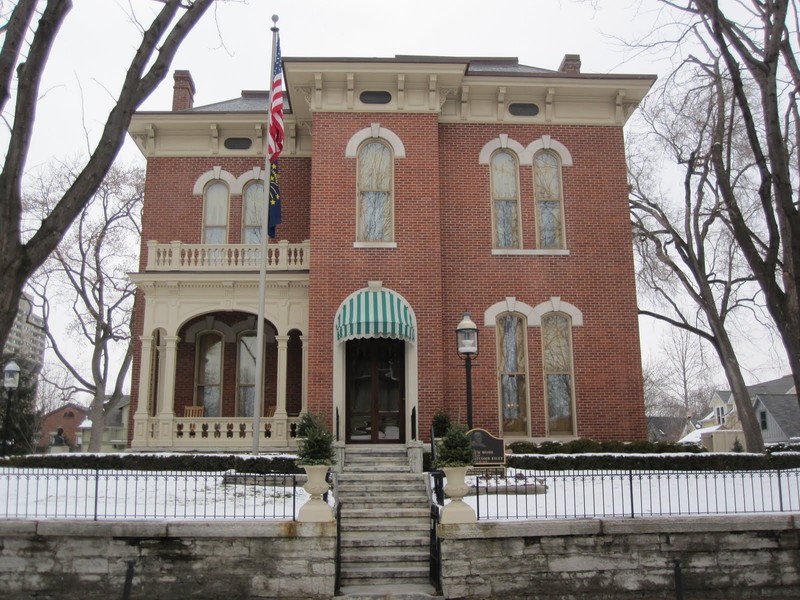
A side view of the James Whitcomb Riley Home and Museum
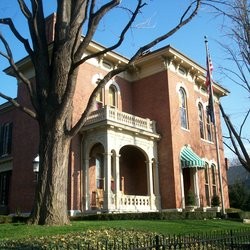
An interior of the Riley Home
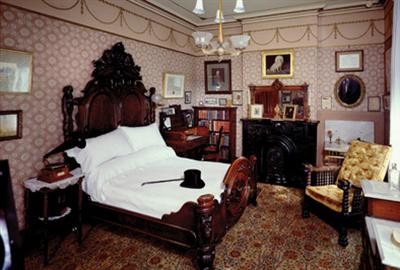

James Whitcomb Riley holds his pet dog while posing for a photo with a group of children in front of his Indianapolis home in 1916. Courtesy of the State of Indiana.
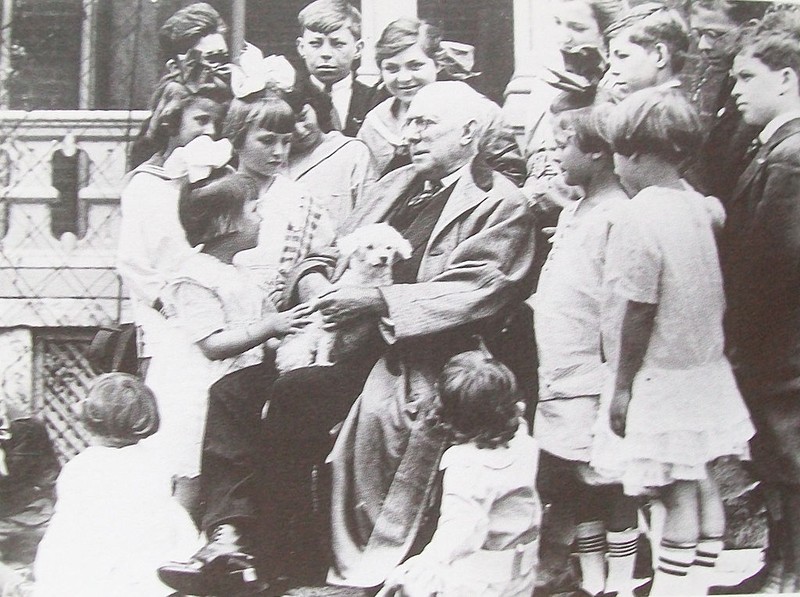
James Whitcomb Riley circa 1913. Courtesy of the Library of Congress
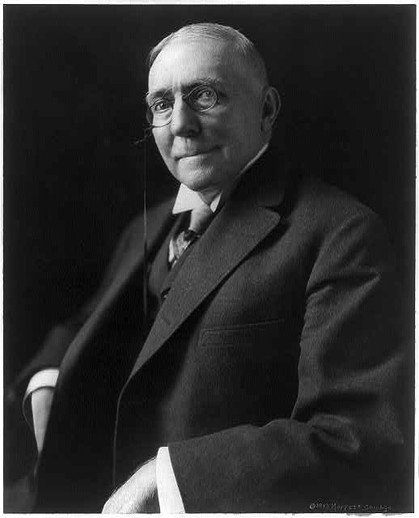
Backstory and Context
Text-to-speech Audio
In 1972, a prosperous Indianapolis baker, John H. Nickum, built a two-story Victorian house of red brick on Lockerbie Street in Indianapolis in the Italianate style, which was very popular in the 1860s and 1870s. Its design included high arched windows, a central tower at the south facade, and a white porch with wooden archways and a carved balustrade. Nickum's wife, his daughter Magdalena and her husband, Major Charles Holstein, also moved into the house with him.
Major Holstein, a Harvard Law graduate and former U.S. Assistant Attorney, as well as a poet himself, befriended the famous poet James Whitcomb Riley, who frequently was a welcome guest at the house. At that time he stayed at the Denison Hotel whenever he was not traveling, but in 1893, when the poet was in his early-to-mid 40s, the Holsteins suggested that he move in with them as a paying guest, and Riley took them up on the offer. He came to call the house, affectionately, "Lockerbie Land," as it gave him the secure domestic environment he wanted. Also, as his poetry nostalgically extolled ordinary Americans in rustic settings, the spacious and comfortable but far from grand house was much more appropriate to his public image than an imposing mansion would have been.
A few years after his death, a group of prominent Indianapolis citizens, including author Booth Tarkington, formed the Riley Memorial Association, which preserved the Riley home as a museum, with much of the furniture and many of Riley's personal effects, including his writing desk and top hat and cane, intact. (In a sense, however, calling the structure the "Riley Home" is misleading, as the poet neither built nor ever owned the house.) The house is the most prominent landmark of the Lockerbie Square Historic District. In 1921, the Association became the Riley Children's Foundation, which, in addition to preserving the house, now runs a children's hospital and a summer camp.
Sources
Cottman, George S. "Some Reminiscences of James Whitcomb Riley," Indiana Magazine of History, vol. 14, no. 2 (June 1918), pp. 99–107. In JSTOR.
Van Allen, Elizabeth J. (1999). James Whitcomb Riley: a life. Indiana University Press.
